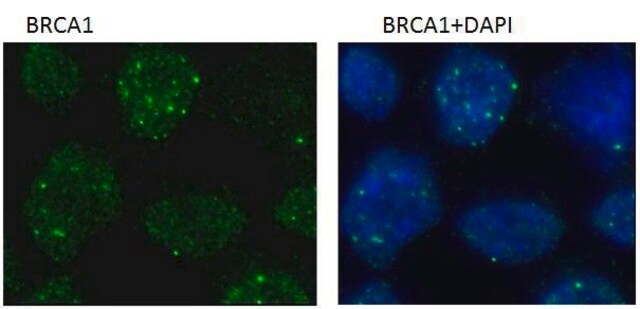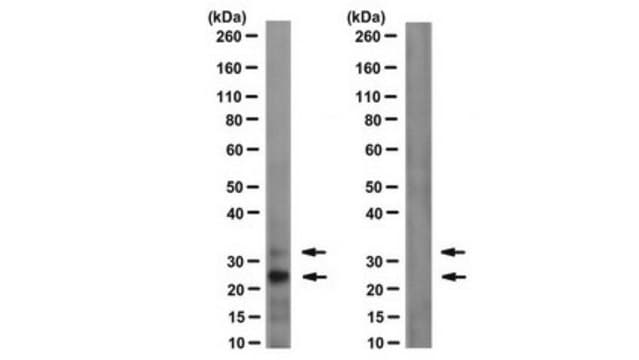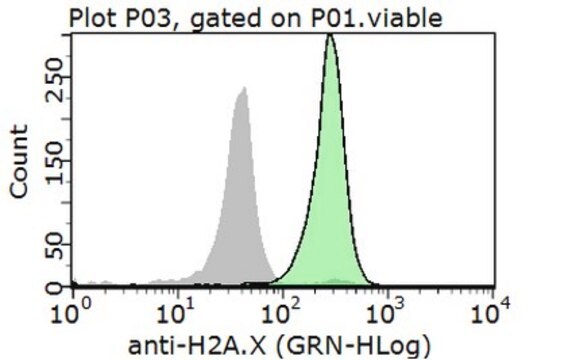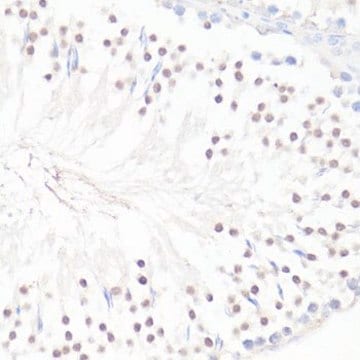05-1572
Anti-MDC1 Antibody, clone P2B11
clone P2B11, from mouse
Synonim(y):
Nuclear factor with BRCT domains 1, homologue to Drosophila photoreceptor protein calphotin, mediator of DNA damage checkpoint 1
About This Item
Polecane produkty
pochodzenie biologiczne
mouse
Poziom jakości
forma przeciwciała
purified immunoglobulin
rodzaj przeciwciała
primary antibodies
klon
P2B11, monoclonal
reaktywność gatunkowa
mouse
reaktywność gatunkowa (przewidywana na podstawie homologii)
chimpanzee (based on 100% sequence homology), bovine (based on 100% sequence homology), human (based on 100% sequence homology)
metody
immunocytochemistry: suitable
western blot: suitable
izotyp
IgG1κ
numer dostępu NCBI
numer dostępu UniProt
Warunki transportu
wet ice
docelowa modyfikacja potranslacyjna
unmodified
informacje o genach
human ... MDC1(9656)
mouse ... Mdc1(240087)
Opis ogólny
Specyficzność
Immunogen
Zastosowanie
Western Blot Analysis: A representative lot was used by an independent laboratory in WB. (Lou, Z., et al. (2003). Nature. 421(6926):957-961.)
Opis wartości docelowych
Postać fizyczna
Inne uwagi
Not finding the right product?
Try our Narzędzie selektora produktów.
Kod klasy składowania
12 - Non Combustible Liquids
Klasa zagrożenia wodnego (WGK)
WGK 1
Temperatura zapłonu (°F)
Not applicable
Temperatura zapłonu (°C)
Not applicable
Certyfikaty analizy (CoA)
Poszukaj Certyfikaty analizy (CoA), wpisując numer partii/serii produktów. Numery serii i partii można znaleźć na etykiecie produktu po słowach „seria” lub „partia”.
Masz już ten produkt?
Dokumenty związane z niedawno zakupionymi produktami zostały zamieszczone w Bibliotece dokumentów.
Nasz zespół naukowców ma doświadczenie we wszystkich obszarach badań, w tym w naukach przyrodniczych, materiałoznawstwie, syntezie chemicznej, chromatografii, analityce i wielu innych dziedzinach.
Skontaktuj się z zespołem ds. pomocy technicznej








